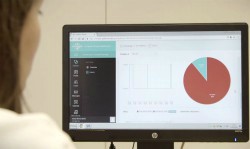Schizophrenia risk factors
Patients with the psychotic disorder of schizophrenia perceive the world around them differently from most people, which impacts on their behaviour and social functioning. One of the most effective ways to manage schizophrenia is to monitor susceptible people for early warning signs of psychosis, and offer early treatment. However, no reliable method currently exists for predicting an individual's risk for becoming psychotic. The EU-funded EU-GEI(opens in new window) (European network of national schizophrenia networks studying gene-environment interactions) initiative has looked at how a person's genes, personal background and other environmental factors combine to increase risk for developing schizophrenia. In the largest study on schizophrenia ever conducted, EU-GEI targeted > 12 million person years at risk at 15 sites in 6 countries, to extract more than 2500 incident cases of which about 1200 were assessed in further detail for further study. Interestingly, incidence rates varied markedly from 10 to 63.9 cases per 100.000 person-years, with higher incidence rates in urban as compared to rural settings, reflecting the effects of underlying environmental factors that are more common in the urban environment. Schizophrenia is a complex, dynamic disorder that differs between individuals and has no apparent single cause, hence linking study subjects' genetic make-up with environmental risk factors can give insight as to how one is conditional on the other. For example, certain genetic variants, or number of copies of certain genetic areas, that a person has, can enhance their risk for developing schizophrenia if they encounter additional environmental risks, such as sexual or physical abuse in childhood. Other environmental or social risk factors that may contribute to triggering schizophrenia are belonging to a minority group, and, as mentioned, living in a city rather than in a rural environment. From these findings, a simple risk assessment chart was generated that is of use for the prediction of clinical cases of schizophrenia. In the course of genetic analyses, a set of more than 7700 DNA samples from individuals including patients and their family members, twin pairs and control individuals was collected. By putting these data together with those of an on-going large international schizophrenia study, an additional new 11 genetic loci that increase risk of schizophrenia could be identified thanks to the EU-GEI data. Interestingly, an additional number of 15 genes were identified, where an aberrant number of copies of the respective genes was associated with a risk to develop schizophrenia. As it is crucial to detect early warning signs for schizophrenia, which generally are difficult to detect, the EU-GEI project developed a personalised portable, smartphone-based prediction tool that uses behavioural and mood fluctuations along with everyday experiences in an individual's life to monitor signs for transition into psychosis. This tool is now implemented to support early diagnosis and personalised healthcare interventions. The EU-GEI project has thus generated more insight into the genetic and environmental determinants of schizophrenia, and has provided clinicians and patients with new tools to better assess risks and predict development of schizophrenia, and to contribute to more personalised treatment strategies.







